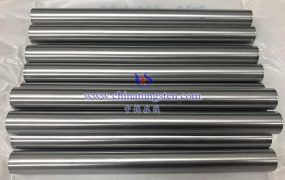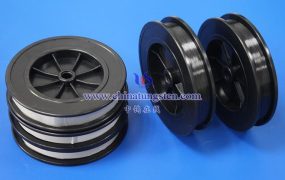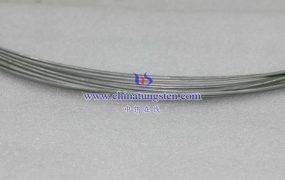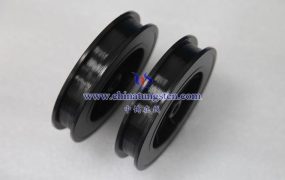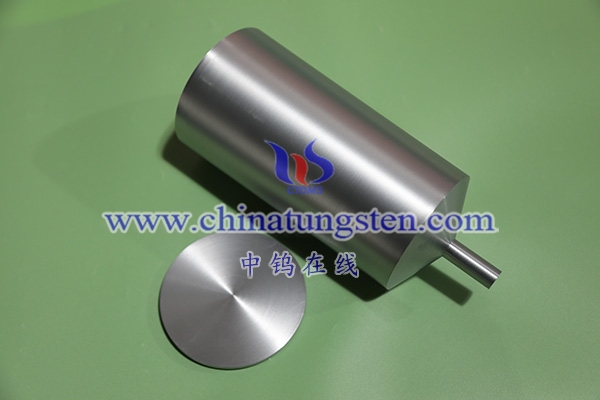
Contents
Chapter 1 Introduction
1.1 Definition and Importance of Molybdenum Crucible
1.2 Historical Development and Technological Evolution
1.3 Role of Molybdenum Crucible in Modern Industry and Scientific Research
Chapter 2 Basic Principles of Molybdenum Crucible
2.1 Physical and Chemical Properties of Molybdenum Metal
2.2 Working Mechanism in High Temperature Environment
2.3 Comparison with Other High Temperature Resistant Materials
2.4 Thermodynamic and Mechanical Properties
Chapter 3 Molybdenum Crucible Performance
3.1 Physical and Chemical Properties of Molybdenum Crucible
3.1.1 Melting Point and Thermal Stability of Molybdenum Crucible
3.1.2 Density and Thermal Conductivity of Molybdenum Crucible
3.1.3 Molybdenum Crucible Anti-Oxidation and Anti-Corrosion Performance
3.1.4 Mechanical Strength and Toughness of Molybdenum Crucible
3.2 Thermal and Mechanical Properties of Molybdenum Crucible
3.2.1 Thermal Expansion and High Temperature Deformation of Molybdenum Crucible
3.2.2 Thermal Shock Resistance of Molybdenum Crucible
3.2.3 Creep and Long-Term Stability of Molybdenum Crucible
3.2.4 Molybdenum Crucible Fatigue and Cyclic Use
3.3 Relationship between Molybdenum Crucible Microstructure and Performance
3.3.1 Grain Structure and Orientation
3.3.2 Effect of Doping Elements
3.3.3 Surface Morphology and High Temperature Performance
3.4 Life and Reliability of Molybdenum Crucible
3.4.1 Factors Affecting Lifespan
3.4.2 Failure Mode Analysis
3.4.3 Reliability Test Method
3.5 China Tungsten Intelligent Molybdenum Crucible MSDS
Chapter 4 Uses of Molybdenum Crucible
4.1 Crystal Growth
4.1.1 Sapphire Crystal (Czochralski Method, Heat Exchange Method)
4.1.2 Silicon Single Crystal (Czochralski Method)
4.1.3 Other Crystal Materials
4.2 High Temperature Smelting and Melting
4.2.1 Rare Earth Metals
4.2.2 Nonferrous Metals and Alloys
4.2.3 Precious Metal Purification
4.3 Vacuum and High Temperature Heat Treatment
4.3.1 Vacuum Heat Treatment Furnace
4.3.2 Powder Metallurgy and Sintering
4.3.3 High Temperature Annealing
4.4 Scientific Research and Laboratory Applications
4.4.1 High Temperature Test Equipment
4.4.2 Material Performance Test
4.4.3 Nuclear Materials and Plasma Research
4.5 Emerging Applications
4.5.1 Additive Manufacturing
4.5.2 Aerospace
4.5.3 Nuclear Fusion Device
Chapter 5 Molybdenum Crucible Preparation Process and Technology
5.1 Raw Material Selection and Preparation
5.1.1 Molybdenum Ore Purification
5.1.2 Molybdenum Powder Quality Requirements
5.1.3 Doping and Alloying
5.1.4 Raw Material Testing
5.2 Metallurgical Process
5.2.1 Pressing and Sintering
5.2.1.1 Isostatic Pressing
5.2.1.2 Sintering Furnace and Atmosphere
5.2.2 Forging and Rolling
5.2.2.1 Hot Forging and Cold Forging
5.2.2.2 Rolling Process
5.2.3 Spinning and Stretching
5.2.3.1 Spinning Die
5.2.3.2 Stretching Temperature and Lubrication
5.3 Processing and Finishing
5.3.1 Turning and Milling
5.3.1.1 CNC Machining
5.3.1.2 Precision and Roughness
5.3.2 Welding Technology
5.3.2.1 Electron Beam Welding
5.3.2.2 Laser Welding and Brazing
5.3.3 Surface Treatment
5.3.3.1 Cleaning and Polishing
5.3.3.2 Anti-Oxidation Coating
5.3.4 Heat Treatment and Annealing
5.3.4.1 Grain Control
5.3.4.2 Stress Relief
5.4 Production Equipment and Automation
5.4.1 Key Equipment
5.4.1.1 Vacuum Sintering Furnace
5.4.1.2 Spinning Machines and Lathes
5.4.1.3 Surface Treatment Equipment
5.4.2 Automation and Intelligence
5.4.3 Clean Room Requirements
Chapter 6 Molybdenum Crucible Quality Control and Inspection
6.1 Online Detection
6.1.1 Dimensions and Accuracy
6.1.2 Surface Defects
6.2 Performance Testing
6.2.1 High Temperature Strength
6.2.2 Corrosion Resistance
6.3 Failure Analysis
6.3.1 Cracks and Deformation
6.3.2 Fatigue and Lifespan
Chapter 7 Precautions for Using Molybdenum Crucible
7.1 Installation and Operation Specifications
7.2 High Temperature Operating Environment Requirements
7.3 Compatibility with Molten Materials
7.4 Maintenance and Cleaning Methods
7.5 Safety Operation and Protection Measures
Chapter 8 Transportation and Storage of Molybdenum Crucible
8.1 Packaging Requirements
8.2 Shock and Moisture Resistance
8.3 Storage Environment and Conditions
8.4 Inventory Management and Quality Tracking
Chapter 9 Sustainability and Recycling of Molybdenum Crucibles
9.1 Energy Saving and Emission Reduction
9.2 Waste Recycling Technology
9.3 Economic and Environmental Benefits of Recycling
9.4 Green Manufacturing Trends and Practices
Chapter 10 Molybdenum Crucible Technical Challenges and Future Development
10.1 Technical Challenges
10.1.1 Antioxidant Properties
10.1.2 Complex Shape Manufacturing
10.1.3 Cost Control
10.2 New Materials and Technologies
10.2.1 Molybdenum-Based Composite Materials
10.2.2 Nanostructures
10.2.3 Alternative Materials
10.3 Intelligent and Green Manufacturing
10.3.1 Intelligent Monitoring
10.3.2 Energy Saving and Environmental Protection
10.3.3 Waste Recycling
10.4 Future Trends
10.4.1 High-Performance Design
10.4.2 Cross-Domain Applications
10.4.3 Extreme Environments
Chapter 11 Molybdenum Crucible Standards and Specifications
11.1 National Standards (GB)
11.1.1 GB/T Molybdenum Material Standard
11.1.2 Testing and Evaluation
11.1.3 Equipment Specifications
11.2 International Standards (ISO)
11.2.1 ISO 6892 Tensile Test
11.2.2 ISO 14001 Environmental Management
11.2.3 ISO 3452 Nondestructive Testing
11.3 American Standard (American Standard)
11.3.1 ASTM B386 Molybdenum Alloy
11.3.2 ASTM E384 Hardness Test
11.3.3 ASME High Temperature Vessels
11.4 Other International and Industry Standards
11.4.1 JIS G 0571
11.4.2 DIN EN 10228
11.4.3 GOST 17431
11.5 Standard Implementation and Certification
11.5.1 Production and Testing
11.5.2 Quality Certification
11.5.3 Export Compliance
Appendix
- Glossary
- References
Chapter 1 Introduction
1.1 Definition and Importance of Molybdenum Crucible
Molybdenum crucible is a high temperature resistant container made of high purity molybdenum metal as the main raw material, which is widely used in high temperature smelting, material synthesis and scientific research. Its main features are high melting point (about 2623℃), excellent corrosion resistance and high temperature strength, as well as good thermal conductivity and low thermal expansion coefficient. These characteristics enable molybdenum crucible to maintain structural stability and chemical inertness in extreme environments, making it an indispensable tool in many industries and scientific research processes.
Molybdenum crucible can be explained from two aspects: its material and purpose. From the perspective of material, molybdenum crucible is usually made of molybdenum metal or molybdenum alloy with a purity of more than 99.95%, and is formed by processes such as powder metallurgy, forging, machining or welding. From the perspective of purpose, molybdenum crucible is mainly used for processes such as material melting, evaporation, sintering and crystal growth in high-temperature environments, such as rare earth metal smelting, sapphire crystal growth, semiconductor material preparation and high-temperature alloy synthesis.
Importance
Molybdenum crucibles in modern industry and scientific research is reflected in the following aspects:
High temperature stability: Molybdenum ‘s high melting point and excellent high temperature strength enable it to work stably at temperatures of 1100°C to 1700°C or even higher, far exceeding many other metal crucibles (such as aluminum, copper or low melting point alloy crucibles). This makes molybdenum crucibles the preferred container for high temperature smelting and material synthesis. For example, in rare earth metal smelting, molybdenum crucibles can withstand extreme high temperatures and maintain chemical stability to avoid impurity contamination.
Corrosion resistance: Molybdenum crucibles have good corrosion resistance to a variety of acids, alkalis and molten metals, especially when in contact with rare earth metals, oxides or certain corrosive chemicals. In contrast, tungsten crucibles, although with a higher melting point, may not be as corrosion-resistant as molybdenum crucibles in certain chemical environments.
Preparation of high-purity materials: The high purity and low impurity release characteristics of molybdenum crucibles make them particularly suitable for the production of high-purity materials. For example, in the process of sapphire crystal growth, molybdenum crucibles can provide a pollution-free high-temperature environment to ensure the quality and optical properties of the crystal. Similarly, in the semiconductor industry, molybdenum crucibles are used to prepare high-purity silicon and other compound materials.
Process flexibility: According to different application requirements, molybdenum crucibles can be prepared by a variety of processing methods, including machining, welding, riveting and stamping. These processing methods give molybdenum crucibles a variety of sizes, shapes and performances, meeting various needs from small-scale laboratory experiments to large-scale industrial production.
Economy and life: Although the manufacturing cost of molybdenum crucible is relatively high, its long service life and reliability in high temperature environment make it highly cost-effective. Compared with other crucible materials (such as tantalum crucible), molybdenum crucible has a longer service life in rare earth smelting and other fields, reducing the replacement frequency and maintenance cost in the production process.
Driving force of scientific research: In the field of scientific research, molybdenum crucibles are widely used in material science, physics and chemistry experiments. For example, in the development of high-temperature superconducting materials, nanomaterials and new alloys, molybdenum crucibles provide a stable experimental platform and promote the development of cutting-edge technologies.
1.2 Historical Development and Technological Evolution
Molybdenum was discovered and applied relatively late, but its development in crucible manufacturing has profoundly influenced modern industry and scientific research. The following discusses its historical development in detail from the discovery of molybdenum, the early application of molybdenum crucibles to the evolution of modern technology.
Discovery and early applications of molybdenum
Molybdenum was first discovered by Swedish chemist Carl Wilhelm Scheele in 1778, who separated molybdenum acid from molybdenite and confirmed it as a new element. In 1792, another Swedish chemist successfully extracted metallic molybdenum by reducing molybdenum acid. Due to its high melting point and difficulty in processing, the early application of molybdenum was mainly limited to the production of chemical reagents and pigments.
At the end of the 19th century, with the advancement of metallurgical technology, molybdenum began to be used as an alloying element in the steel industry. For example, the alloy of molybdenum and steel significantly improved the high-temperature strength and corrosion resistance of steel, and was widely used in weapons manufacturing and machinery industry. However, the development of molybdenum crucibles was still limited by material purity and processing technology. It was not until the beginning of the 20th century that the rise of powder metallurgy technology laid the foundation for the manufacture of molybdenum crucibles.
Molybdenum Crucibles
In the early 20th century, molybdenum crucibles began to appear in laboratories and small industrial applications. Early molybdenum crucibles were mainly prepared by powder metallurgy, that is, molybdenum powder was pressed into shape and then sintered at high temperature. Although this method can produce high-purity molybdenum crucibles, the density and mechanical strength of the crucibles are low, which limits their application in high temperature and high-pressure environments.
During World War II, the demand for molybdenum crucibles surged due to the rapid development of the military and aviation industries. For example, molybdenum crucibles were used in the smelting of high-temperature alloys and special materials, providing support for the manufacture of aircraft engines and armor materials. During this period, the processing technology of molybdenum crucibles was significantly improved, and machining and forging processes began to be applied to crucible manufacturing, improving the density and durability of the product.
Modern technology evolution
In the second half of the 20th century, with the rise of rare earth metals, semiconductors and sapphire crystal industries, the application areas of molybdenum crucibles expanded rapidly, and manufacturing technology also made revolutionary progress. The following are several key aspects of the evolution of molybdenum crucible technology:
High-purity molybdenum material: Modern molybdenum crucibles usually use molybdenum metal with a purity of more than 99.95%, and impurities are removed through advanced purification technologies such as electron beam melting and zone melting. This significantly improves the chemical stability and high-temperature performance of the crucible, meeting the needs of high-purity material preparation.
Diversified processing technology: According to application requirements, the manufacturing process of molybdenum crucible has developed into various types, including:
Machined crucible: processed from molybdenum rods or molybdenum plates through turning, milling and other processes, suitable for crucibles with high precision and complex shapes.
Welding crucible: It is made by cutting and curling molybdenum plates and then vacuum welding. It has low cost but the weld quality needs to be strictly controlled.
Riveted crucible: Made by mechanically connecting molybdenum plates, suitable for the manufacture of large crucibles.
Stamped crucible: It is formed by stamping molybdenum plate through a mold, suitable for mass production of small crucibles.
Doping and alloying: In order to improve the high temperature strength and corrosion resistance of molybdenum crucibles, modern manufacturing processes often add trace elements (such as cerium oxide, titanium hydride or rare earth elements) to molybdenum. For example, adding cerium oxide can significantly extend the service life of molybdenum crucibles in rare earth smelting.
Advanced sintering technology: The sintering process of modern molybdenum crucibles is usually carried out in a vacuum or hydrogen protective atmosphere to prevent oxidation and increase the density of the crucible. The application of isostatic pressing technology further improves the uniformity and mechanical properties of the crucible.
Customized design: With the diversification of industrial and scientific research needs, the size, shape and performance of molybdenum crucibles can be customized according to customer needs. For example, sapphire crystal growth requires large, thick-walled molybdenum crucibles, while the semiconductor industry requires small, high-precision crucibles.
Environmental protection and sustainability: In recent years, the manufacturing process of molybdenum crucibles has begun to focus on environmental protection and resource recycling. For example, waste molybdenum crucibles can be recycled through chemical treatment and re-smelting to recover molybdenum metal, reducing production costs and environmental impact.
CTIA GROUP LTD plays an important role in the R&D and production of molybdenum crucibles. Its website provides a wealth of technical information and market trends on molybdenum crucibles. For example, the high-purity molybdenum crucibles developed by the company are widely used in rare earth smelting and sapphire crystal growth. Its products are known for their high density (≥ 9.8g /cm³) and long life.
1.3 The role of molybdenum crucible in modern industry and scientific research
In modern industry and scientific research, molybdenum crucible plays a vital role with its excellent performance and wide range of application scenarios. The following discusses its role in detail from three aspects: industrial application, scientific research contribution and future trends.
Industrial Applications
Rare earth metal smelting: Molybdenum crucible is the main container for smelting rare earth metals and their oxides. Rare earth metals (such as neodymium, dysprosium, and terbium) are highly corrosive at high temperatures, and molybdenum crucibles can effectively resist the erosion of these corrosive substances, ensuring the purity and efficiency of the smelting process. For example, in the production of NdFeB magnets, molybdenum crucibles are used to melt high-purity neodymium metal.
Sapphire crystal growth: Sapphire crystals are widely used in LED substrates, optical windows and watch mirrors. Their growth needs to be carried out at high temperatures (about 2050°C). Molybdenum crucibles are ideal containers for crystal growth using the Czochralski method and the Heat Exchanger Method due to their high temperature stability and low impurity release characteristics.
Semiconductor industry: In the preparation of semiconductor materials (such as silicon and gallium arsenide), molybdenum crucibles are used in high-temperature evaporation and deposition processes. Its high purity and corrosion resistance ensure the quality of semiconductor materials and meet the stringent requirements of chip manufacturing for material purity.
High temperature alloys and special materials: Molybdenum crucibles are used for sintering and melting high temperature alloys (such as nickel-based alloys, titanium alloys) and special ceramics. These materials are widely used in aerospace, energy and medical fields. For example, in the manufacture of aircraft engine turbine blades, molybdenum crucibles are used to melt high temperature alloy raw materials.
Photovoltaic and new energy: Molybdenum crucibles are used in the photovoltaic industry to produce polysilicon and monocrystalline silicon. Their high temperature performance supports the smelting and purification of silicon ingots. In addition, molybdenum crucibles are also used in the research and development of solid-state batteries and fuel cell materials.
Scientific research contribution
Materials Science: Molybdenum crucibles provide a reliable experimental platform for the synthesis of new materials. For example, in the preparation of high-temperature superconducting materials (such as yttrium barium copper oxide), molybdenum crucibles can provide a stable high-temperature environment to support complex chemical reactions.
Physics and chemistry experiments: In high temperature and high-pressure experiments, molybdenum crucibles are used to study phase transitions, thermodynamic properties and chemical reaction kinetics of materials. For example, molybdenum crucibles are used to study the sintering behavior of metal-ceramic composites.
Nanotechnology: Molybdenum crucibles play a role in the preparation of nanomaterials (such as carbon nanotubes and graphene). Their high temperature stability and chemical inertness support processes such as vapor deposition and pyrolysis.
Energy research: In the field of nuclear energy and renewable energy, molybdenum crucibles are used to study the performance of high-temperature fuel cell and nuclear reactor materials. For example, molybdenum crucibles are used to test the compatibility of materials in high-temperature molten salt reactors.
Future Trends
Intelligent manufacturing: With the advancement of Industry 4.0, the manufacturing of molybdenum crucibles will become more intelligent. For example, sensors and data analysis can be used to optimize the sintering process and improve the density and consistency of the crucible.
Green production: The tightening of environmental regulations has promoted the greening of molybdenum crucible manufacturing. In the future, molybdenum crucible production will pay more attention to energy efficiency and waste recycling to reduce environmental footprint.
New material development: Molybdenum crucibles will play a greater role in the preparation of emerging fields such as graphene, two-dimensional materials and quantum materials. For example, molybdenum crucibles may be used for high-temperature synthesis of two-dimensional transition metal sulfides (such as MoS₂).
Cross-industry applications: With the development of biomedicine and space exploration, molybdenum crucibles may be used for high-temperature synthesis of biomaterials or preparation of materials in space environments.
READ MORE: Complete Guide to Molybdenum Crucible
===================================================================
Customized R&D and Production of Tungsten, Molybdenum Products
Chinatungsten Online and CTIA GROUP LTD have been working in the tungsten industry for nearly 30 years, specializing in flexible customization of tungsten and molybdenum products worldwide, which are tungsten and molybdenum design, R&D, production, and overall solution integrators with high visibility and credibility worldwide.
Chinatungsten Online and CTIA GROUP LTD provide products mainly including: tungsten oxide products, such as tungstates such as APT/WO3; tungsten powder and tungsten carbide powder; tungsten metal products such as tungsten wire, tungsten ball, tungsten bar, tungsten electrode, etc.; high-density alloy products, such as dart rods, fishing sinkers, automotive tungsten crankshaft counterweights, mobile phones, clocks and watches, tungsten alloy shielding materials for radioactive medical equipment, etc.; tungsten silver and tungsten copper products for electronic appliances. Cemented carbide products include cutting tools such as cutting, grinding, milling, drilling, planing, wear-resistant parts, nozzles, spheres, anti-skid spikes, molds, structural parts, seals, bearings, high-pressure and high-temperature resistant cavities, top hammers, and other standard and customized high-hardness, high-strength, strong acid and alkali resistant high-performance products. Molybdenum products include molybdenum oxide, molybdenum powder, molybdenum and alloy sintering materials, molybdenum crucibles, molybdenum boats, TZM, TZC, molybdenum wires, molybdenum heating belts, molybdenum spouts, molybdenum copper, molybdenum tungsten alloys, molybdenum sputtering targets, sapphire single crystal furnace components, etc.
If you are interested in related products, please contact us:
Email: sales@chinatungsten.com|
Tel: +86 592 5129696 / 86 592 5129595


